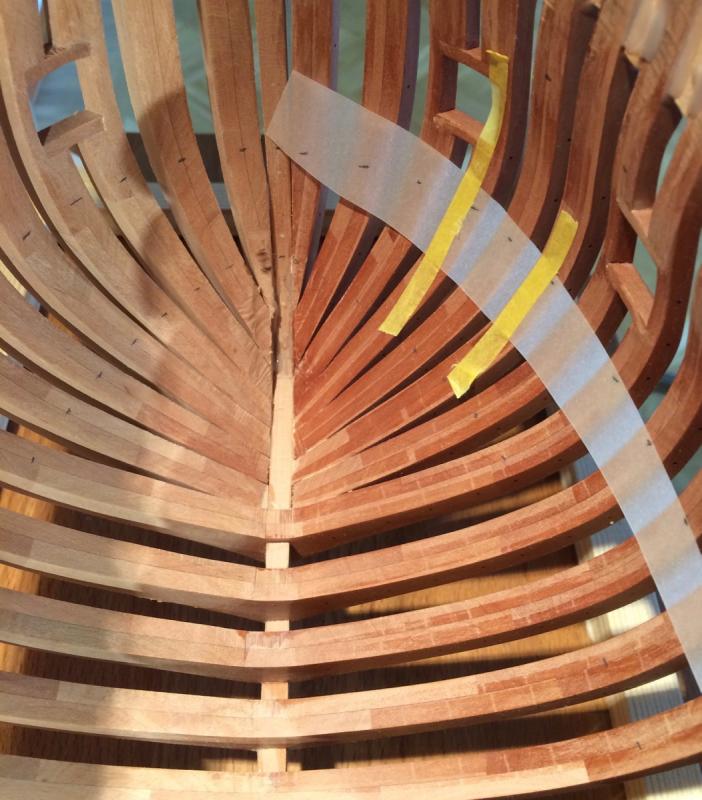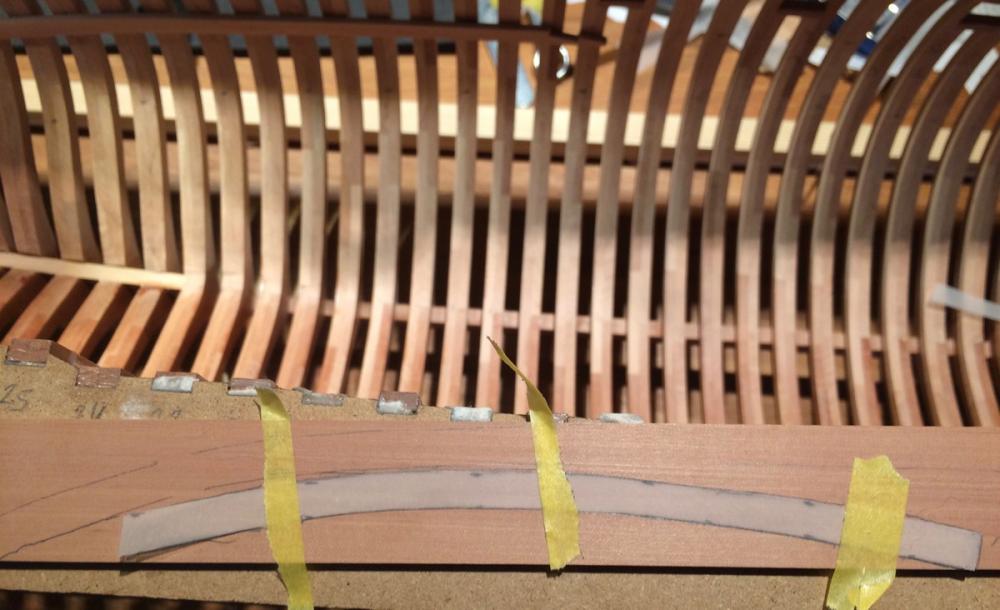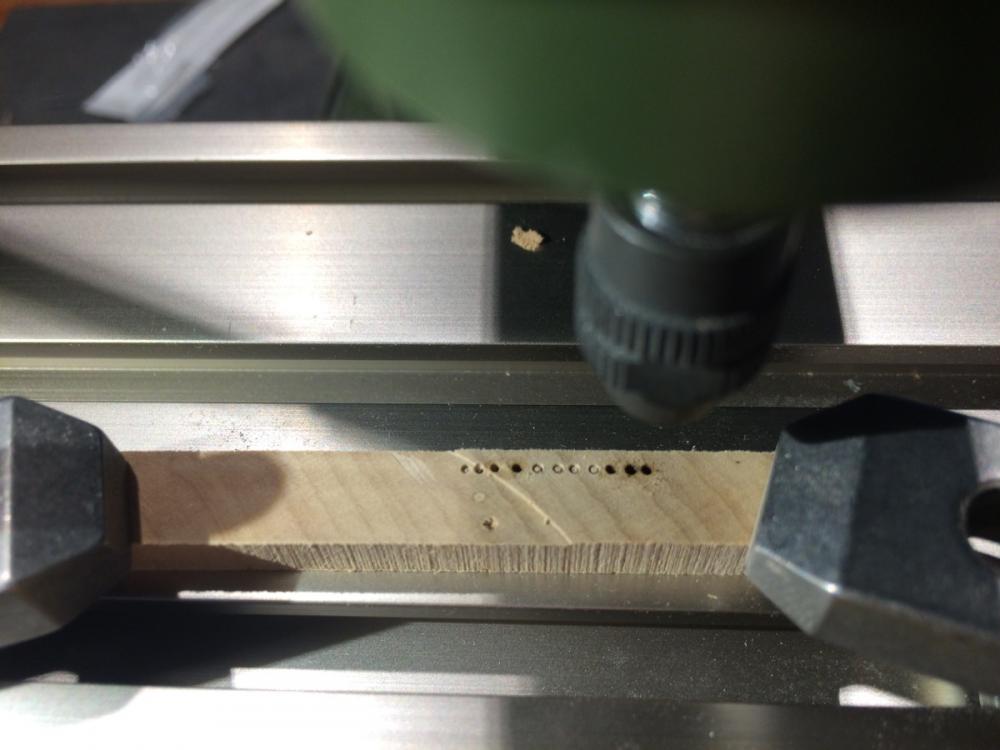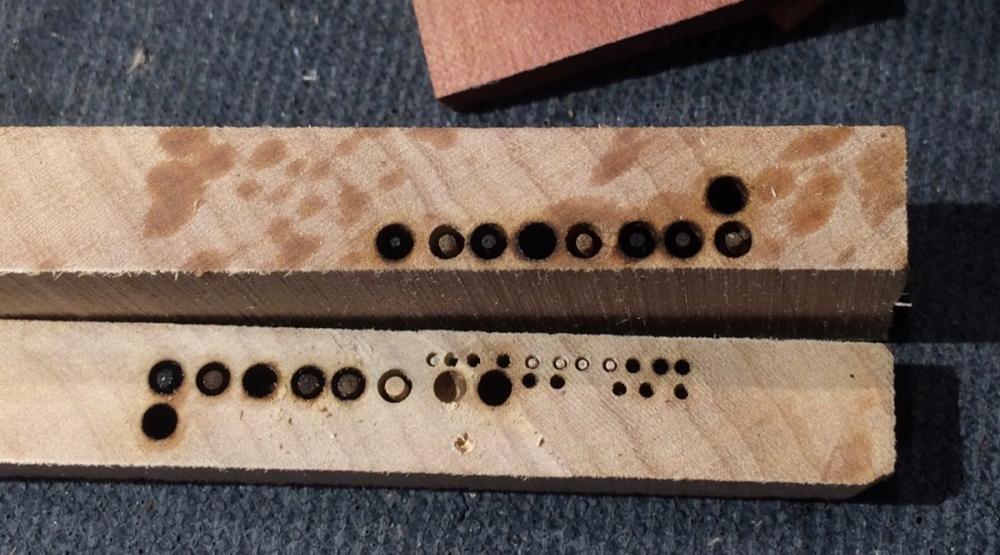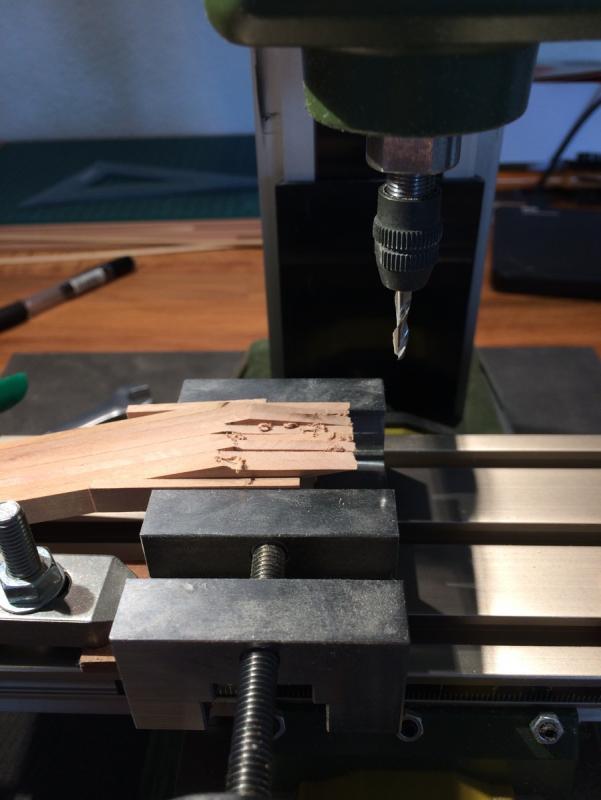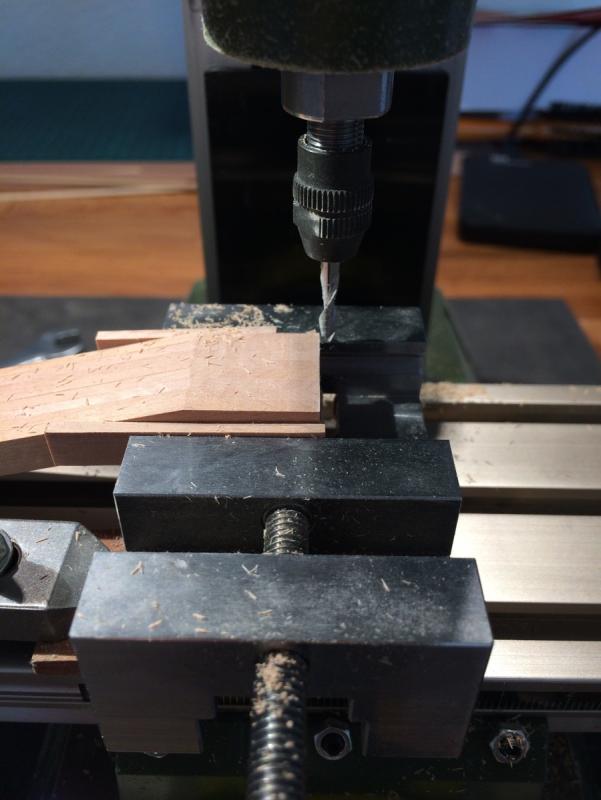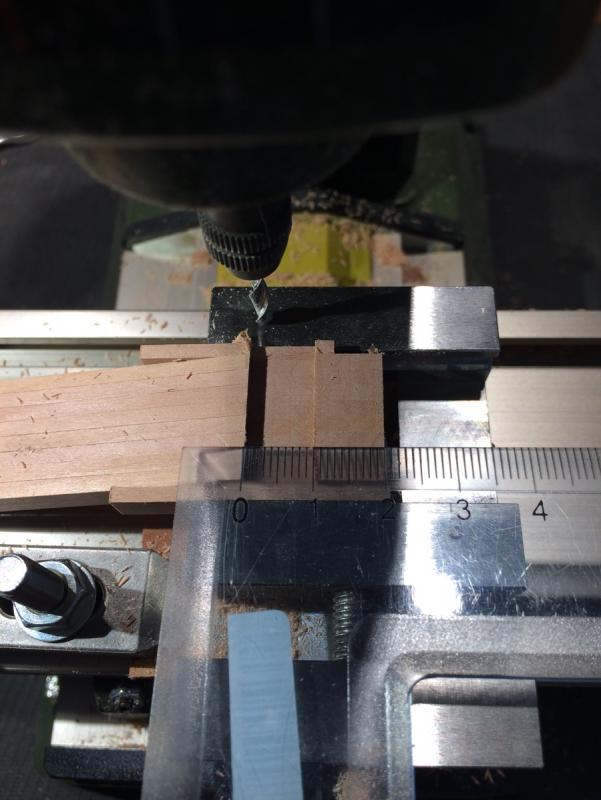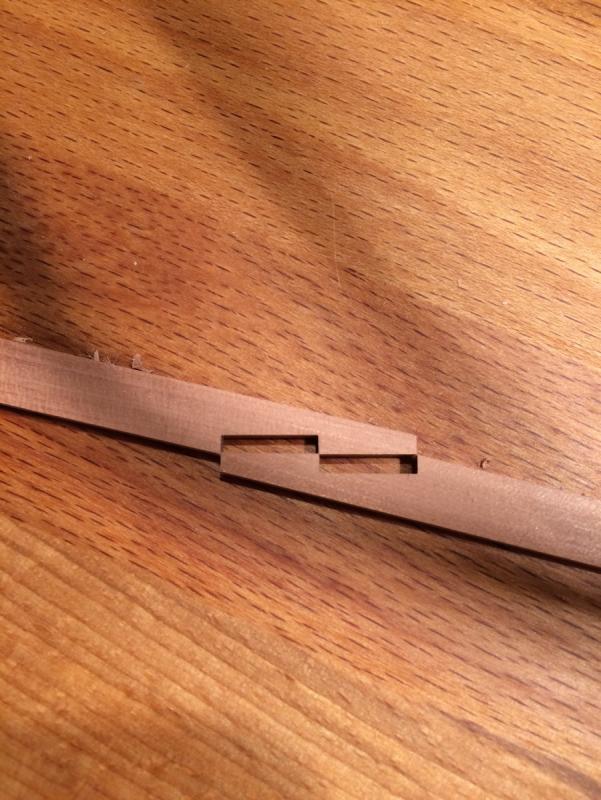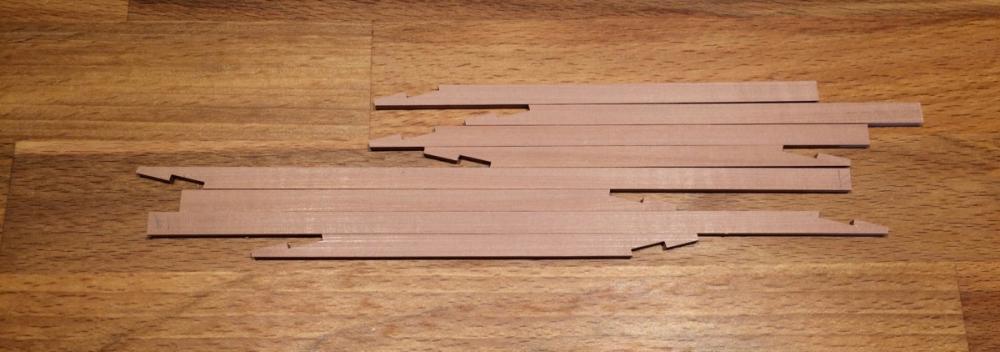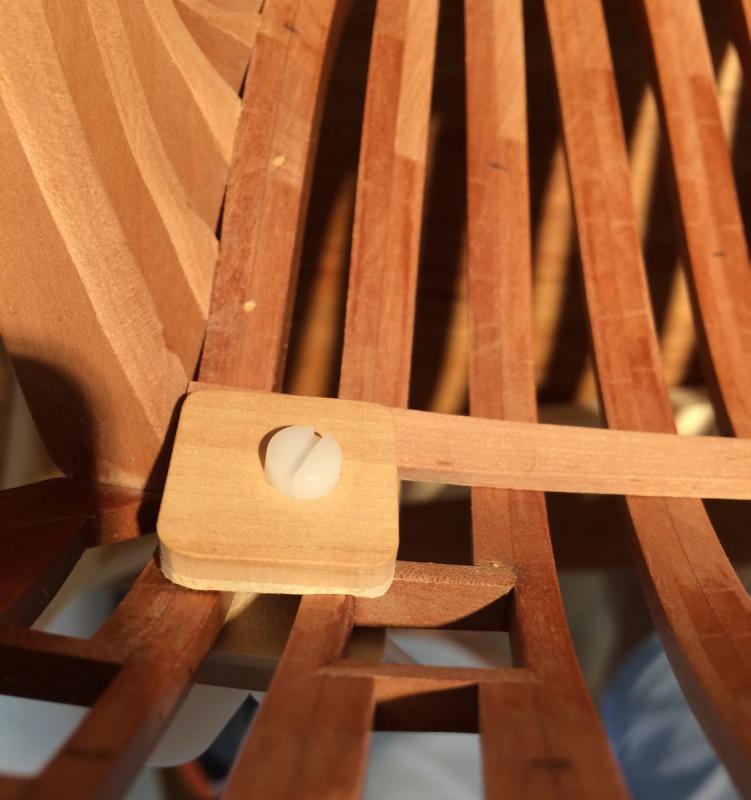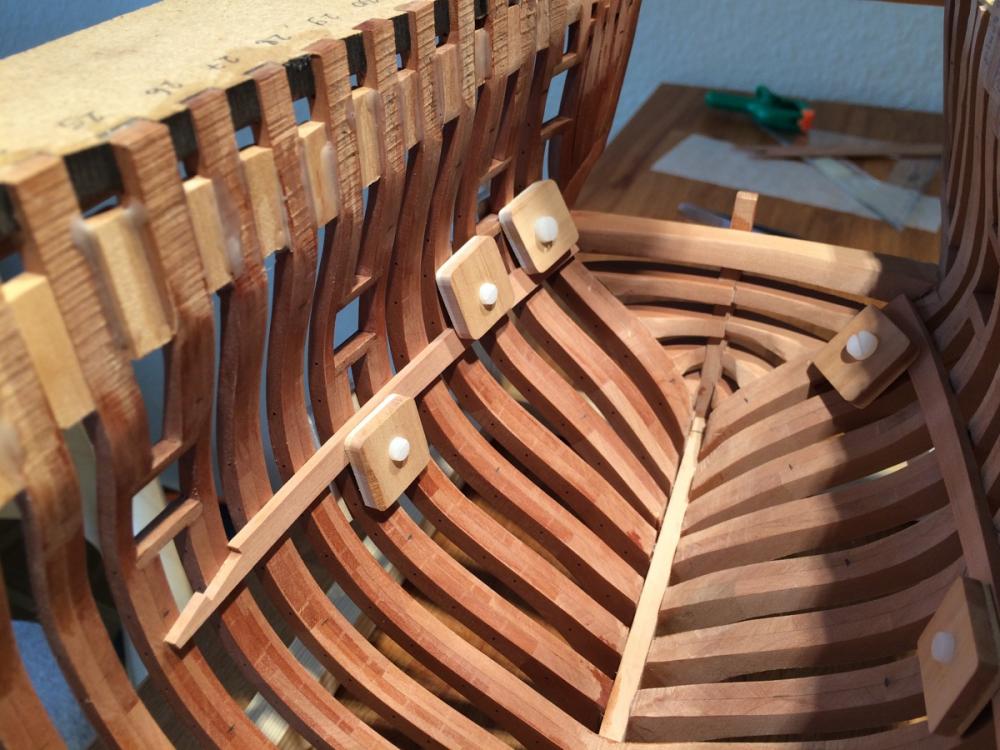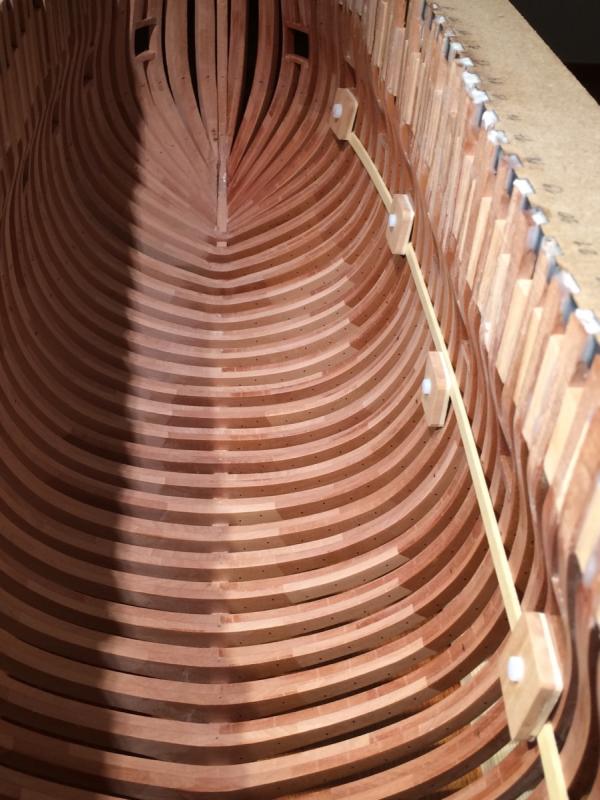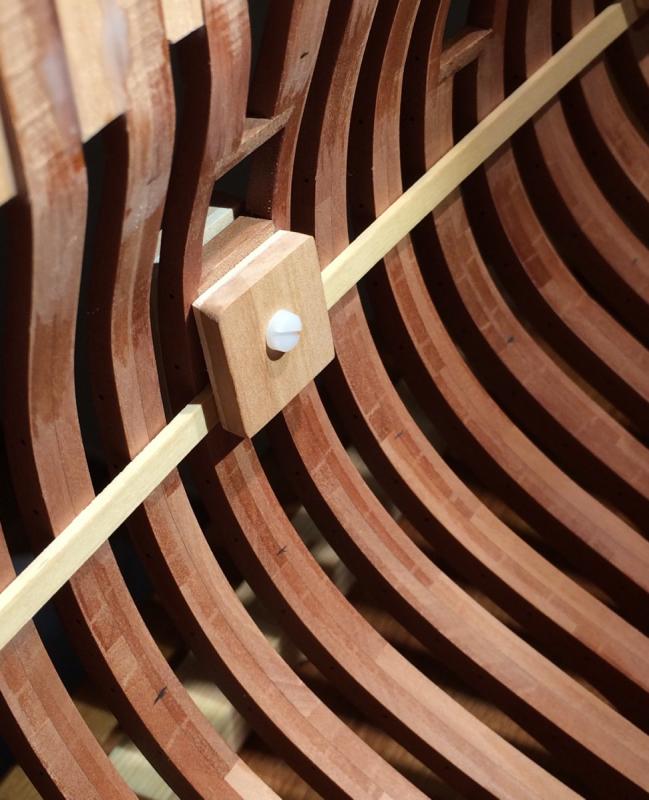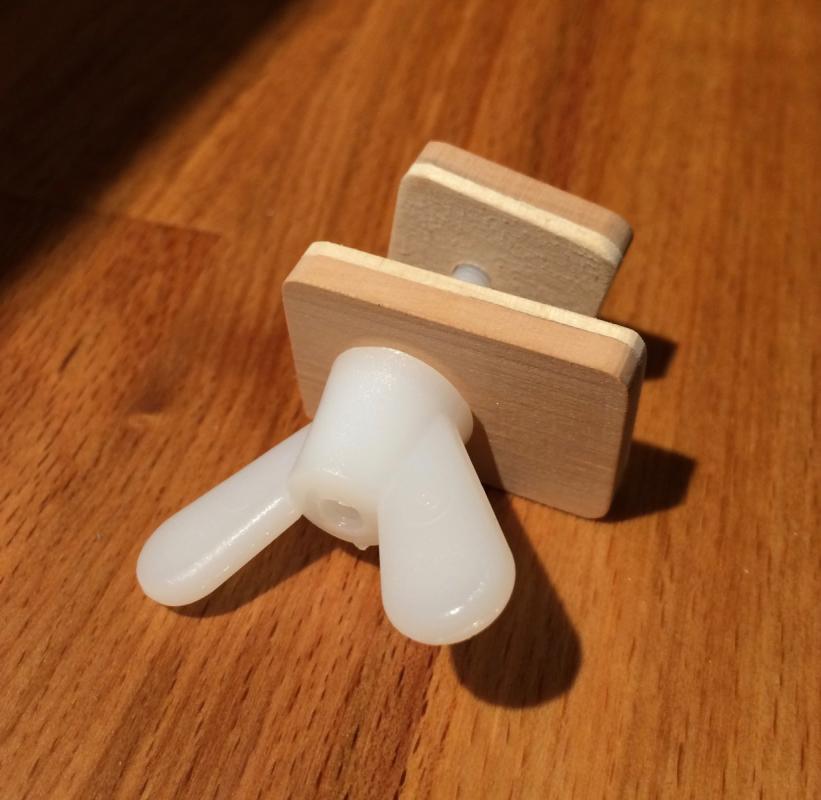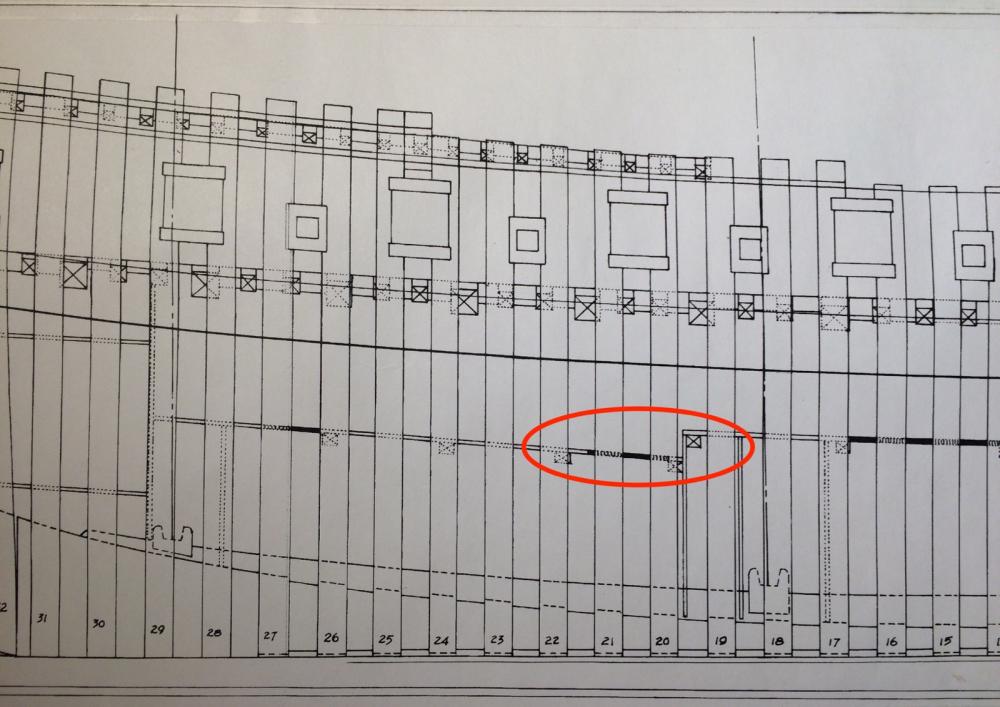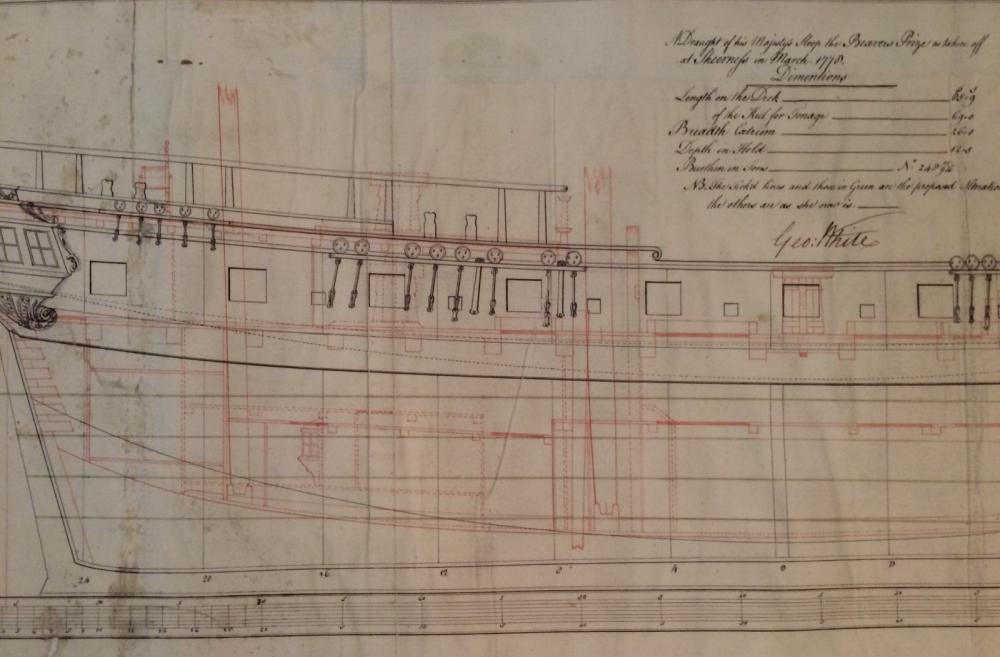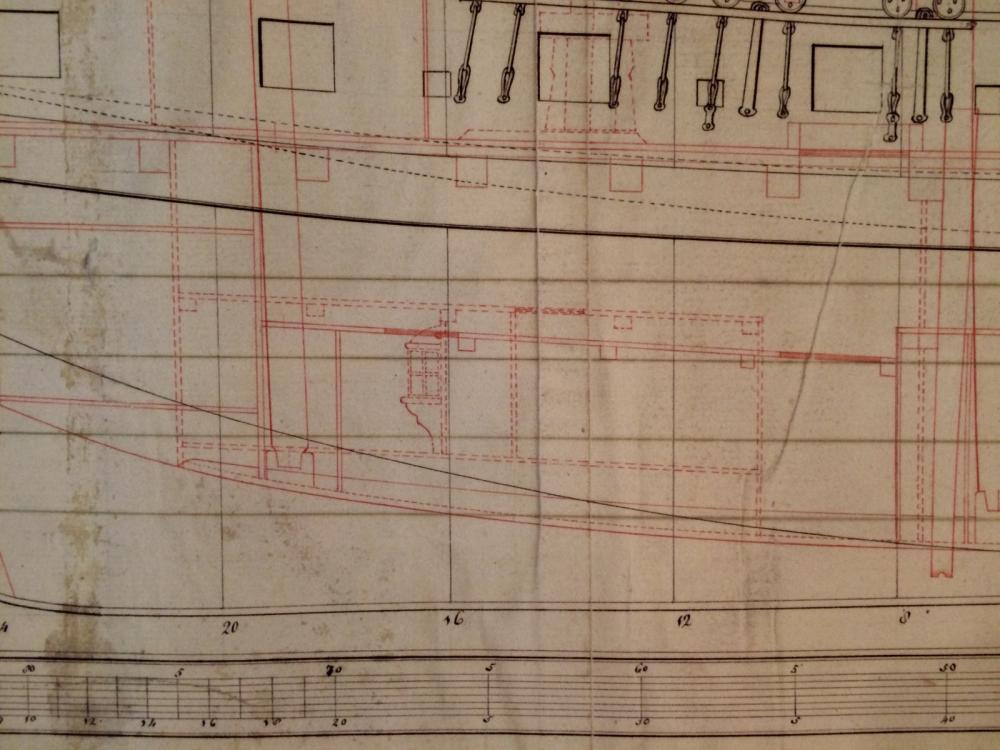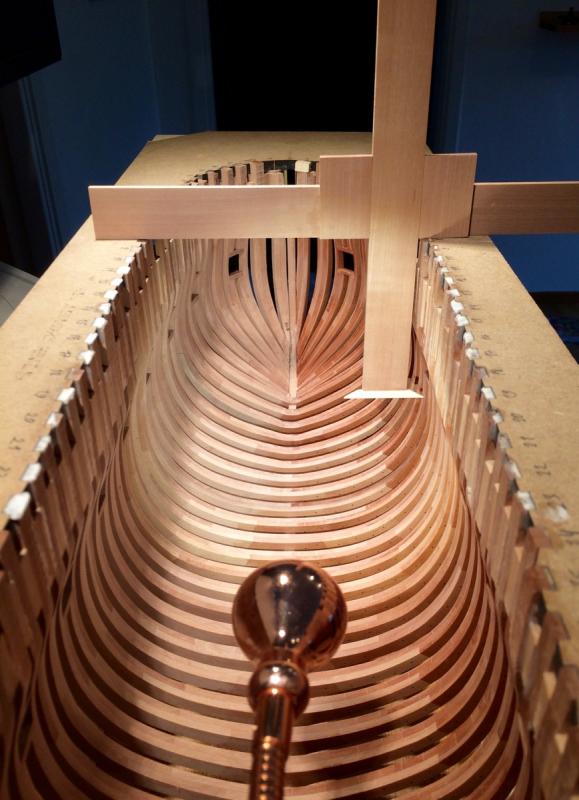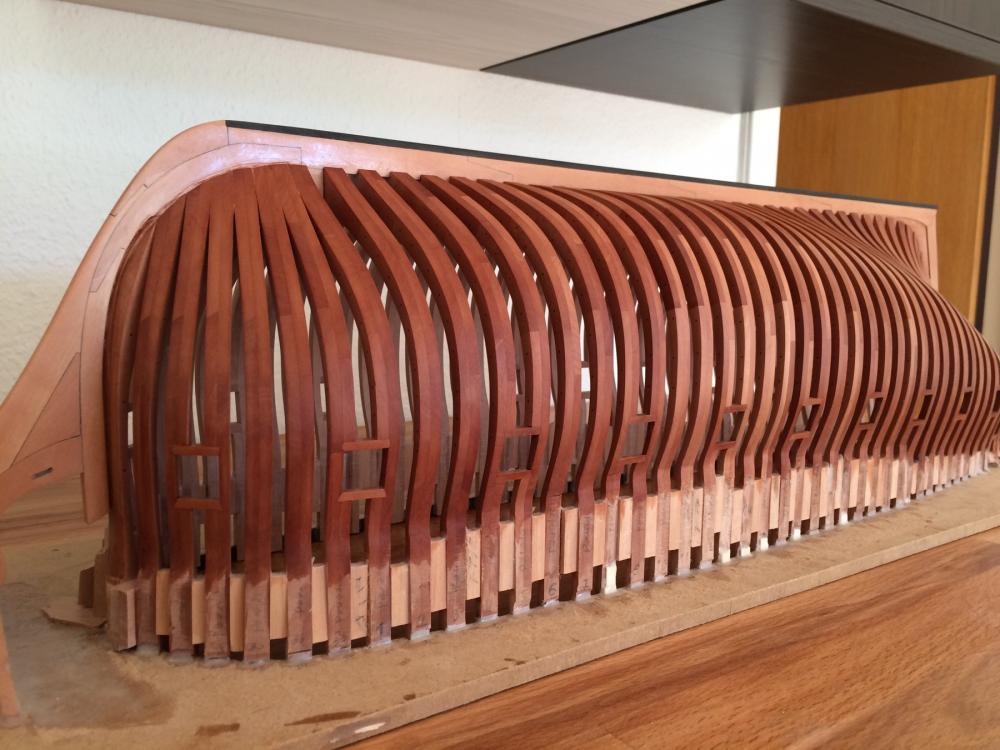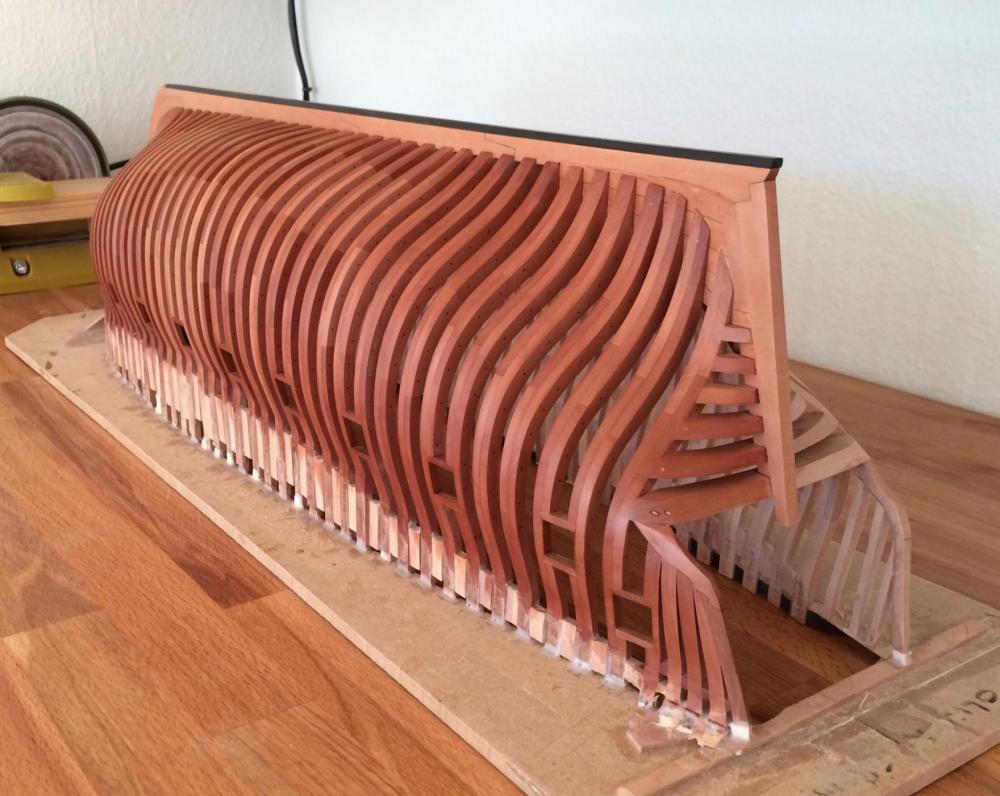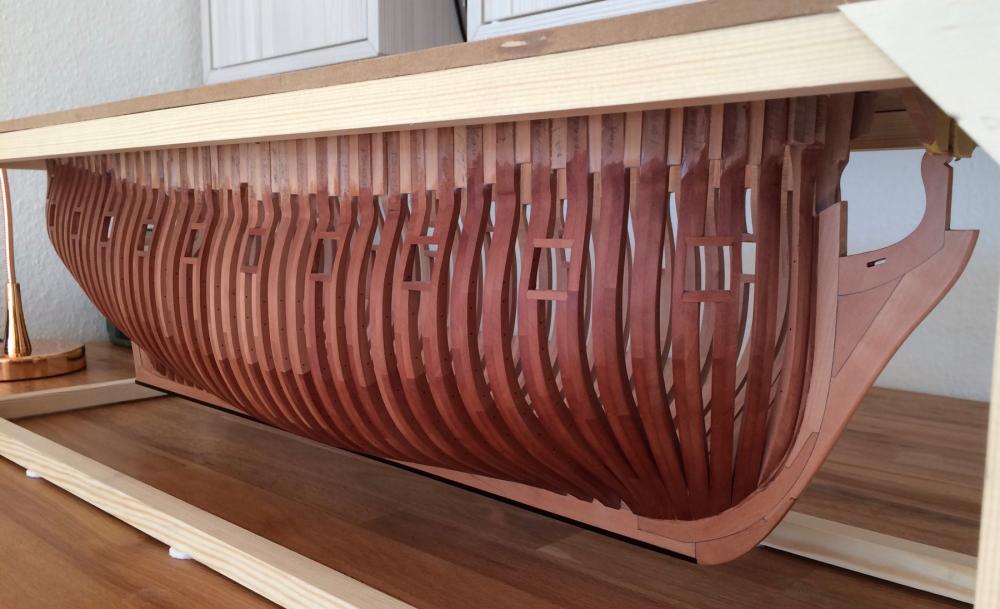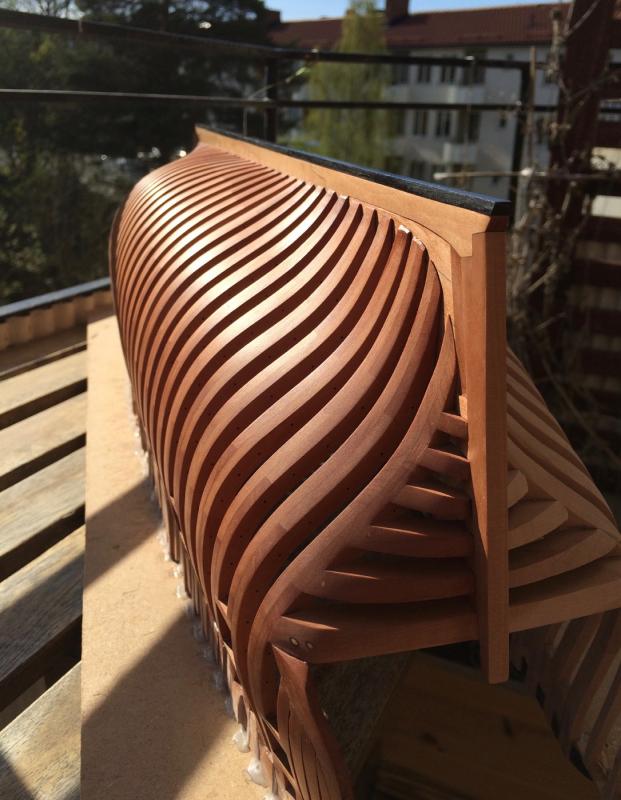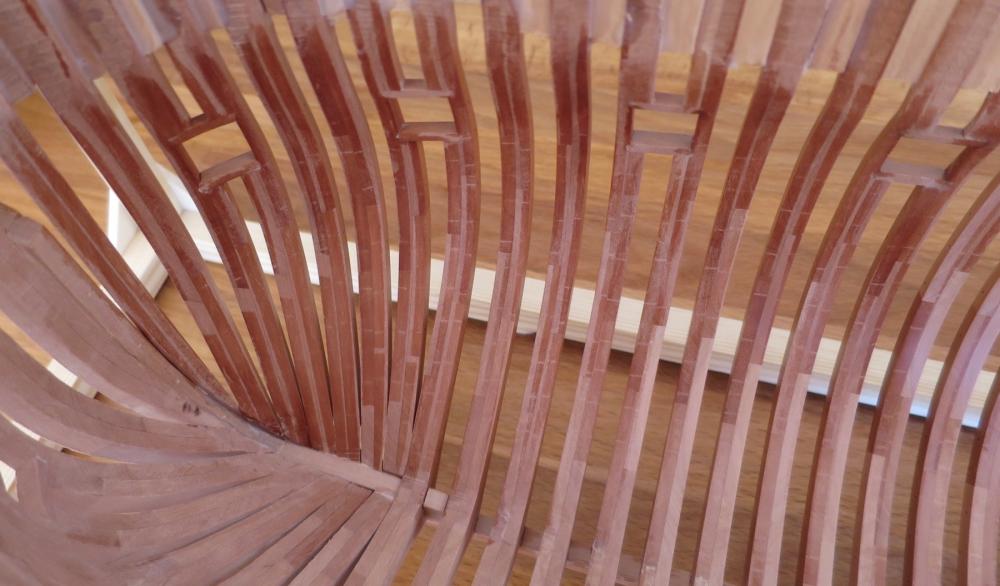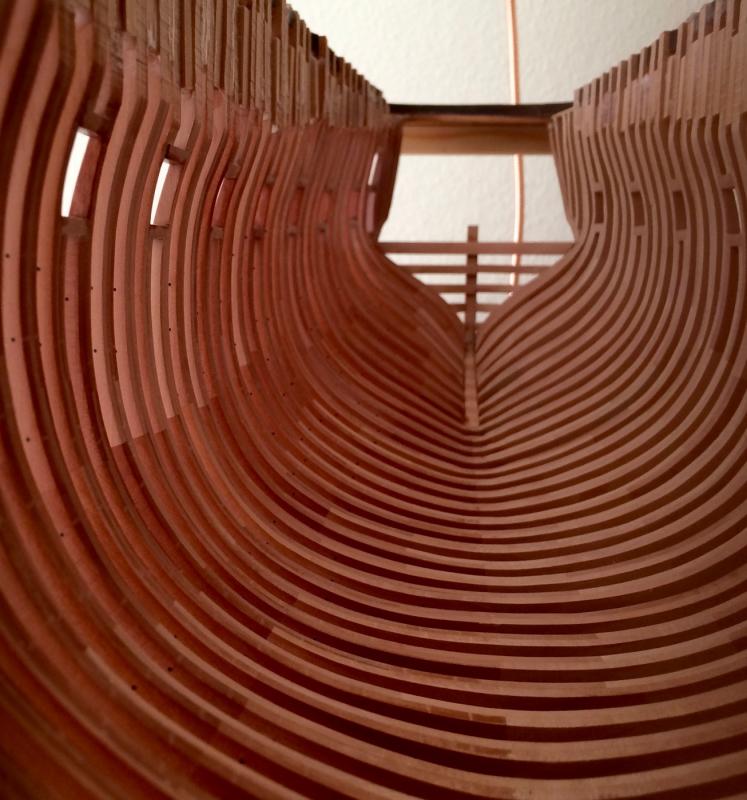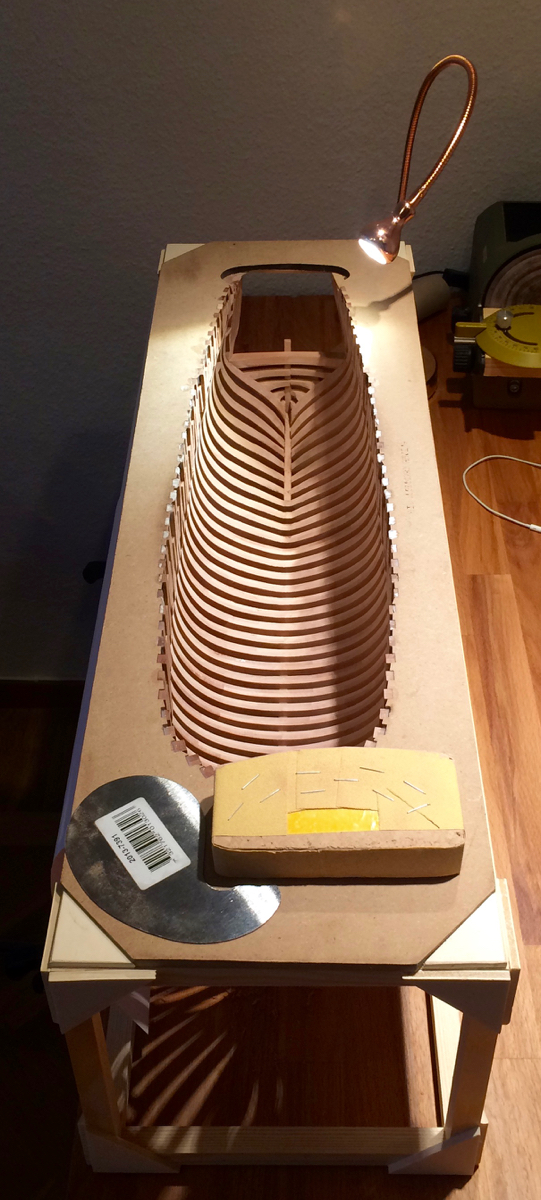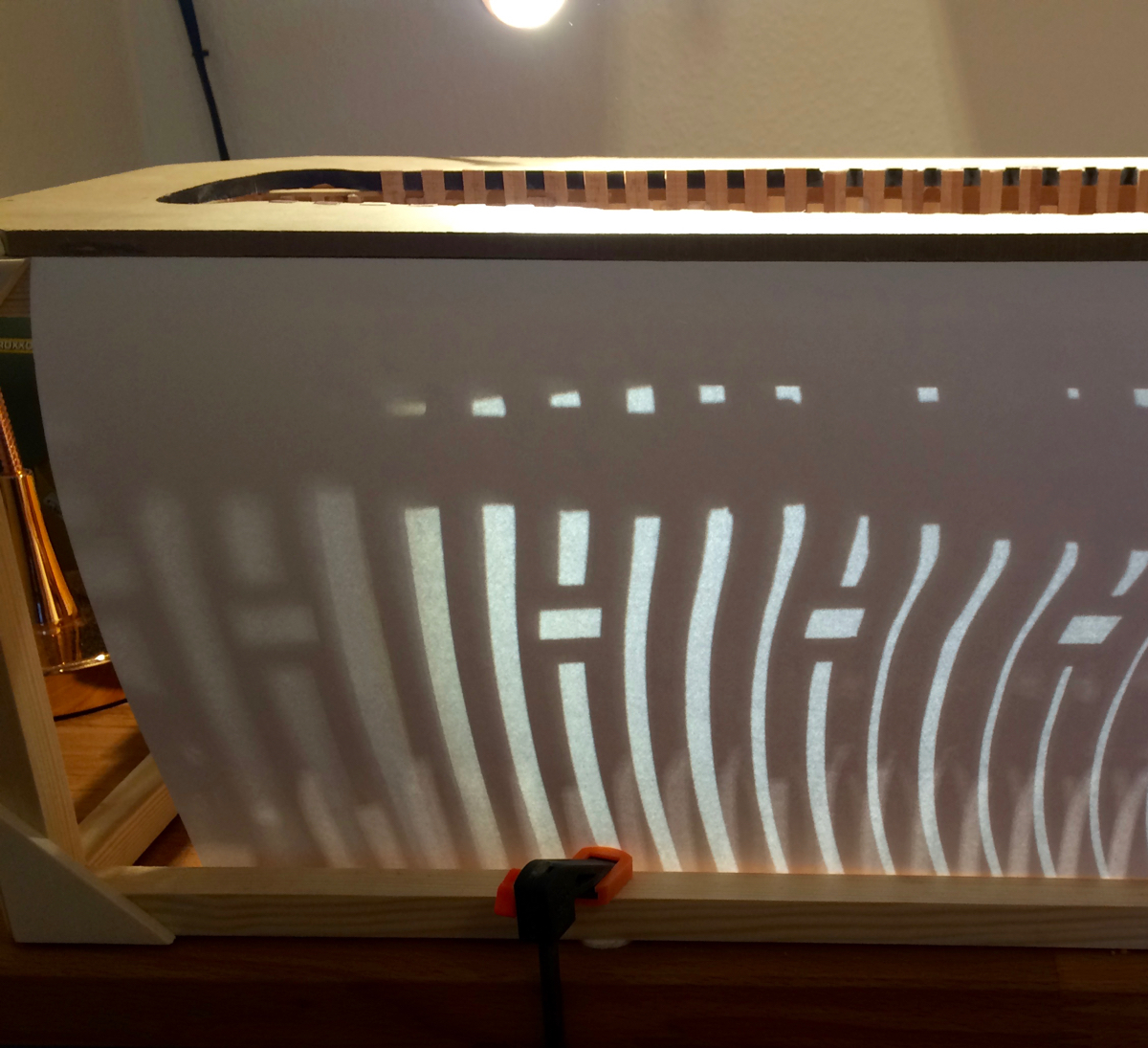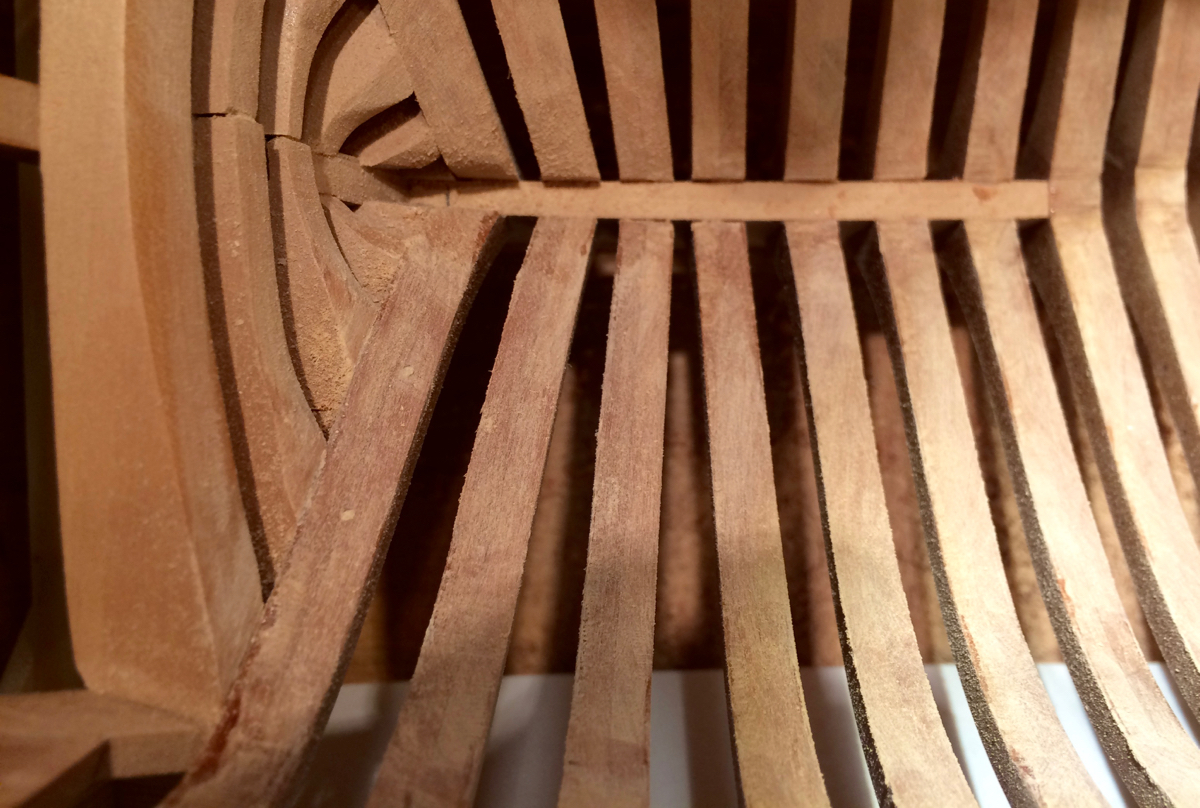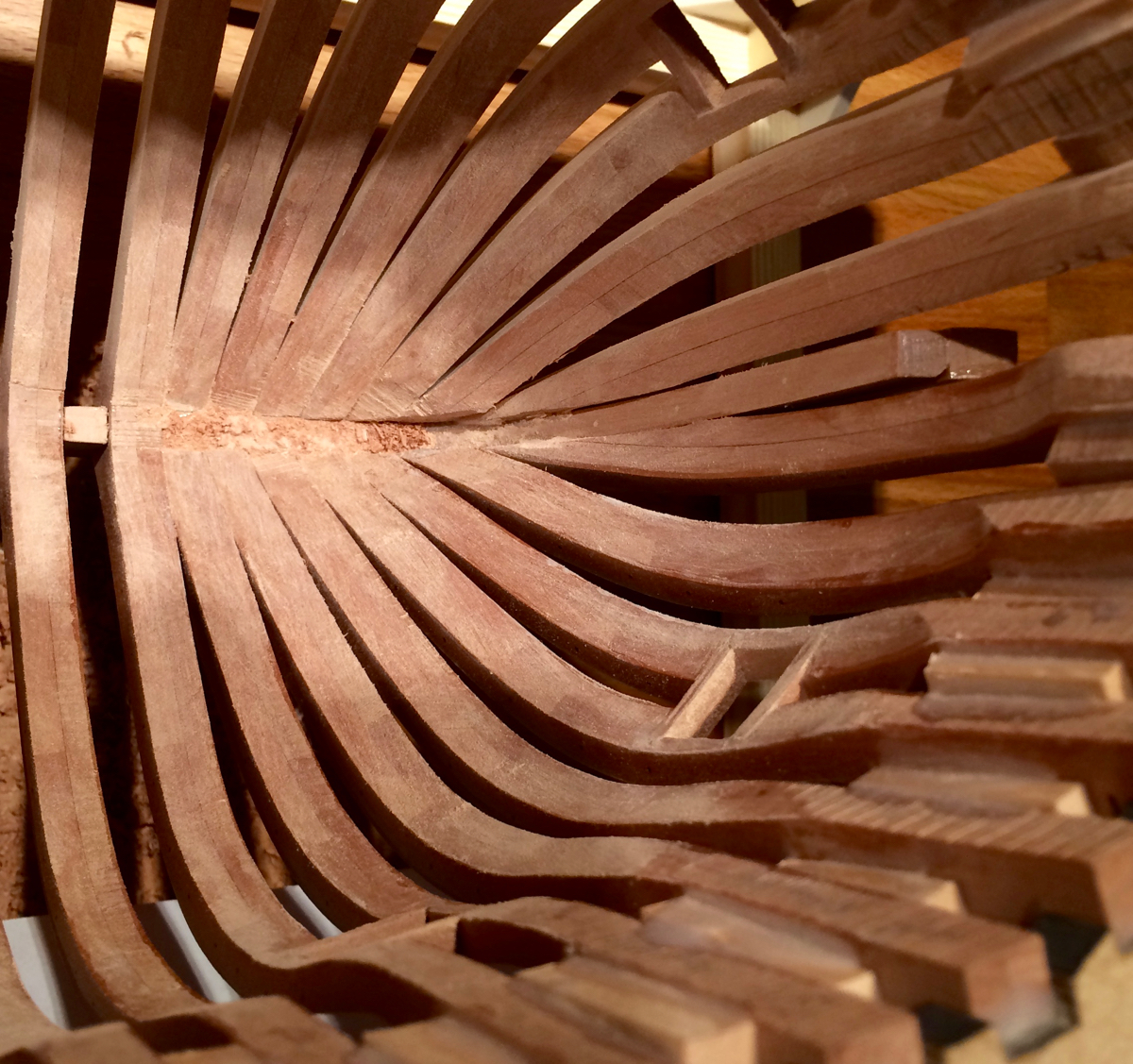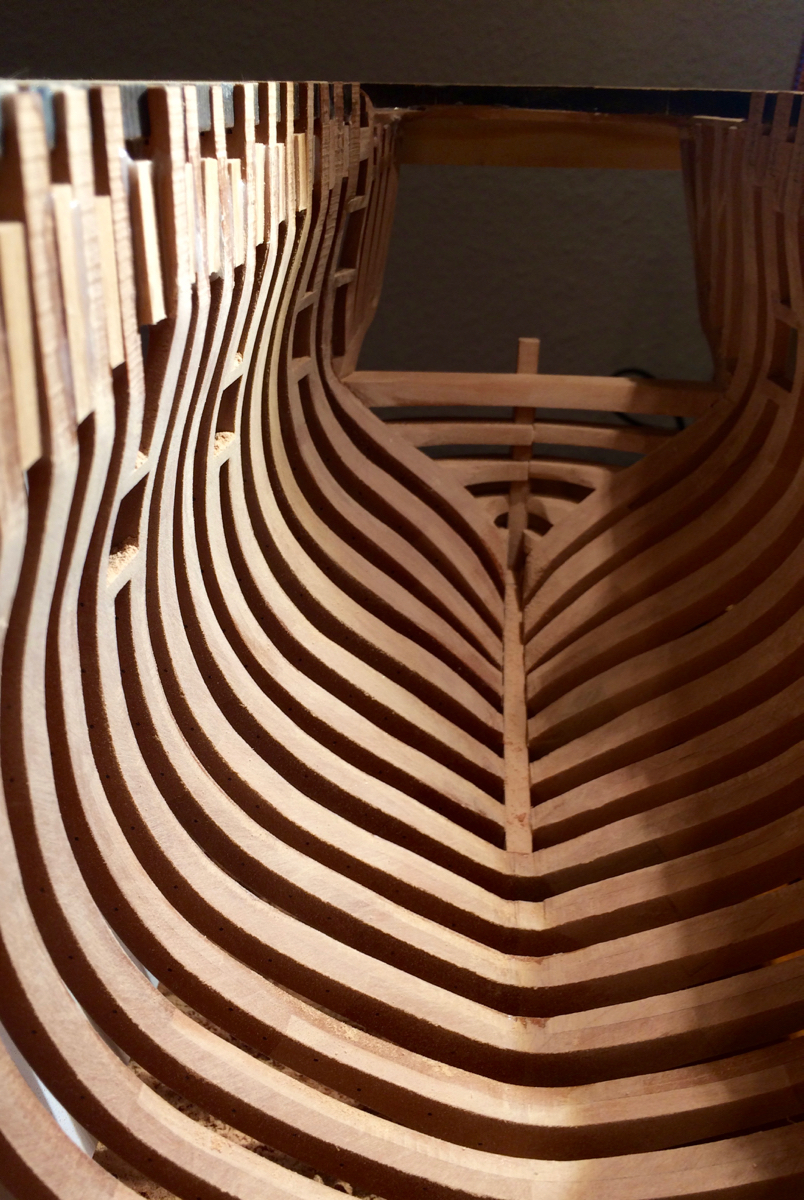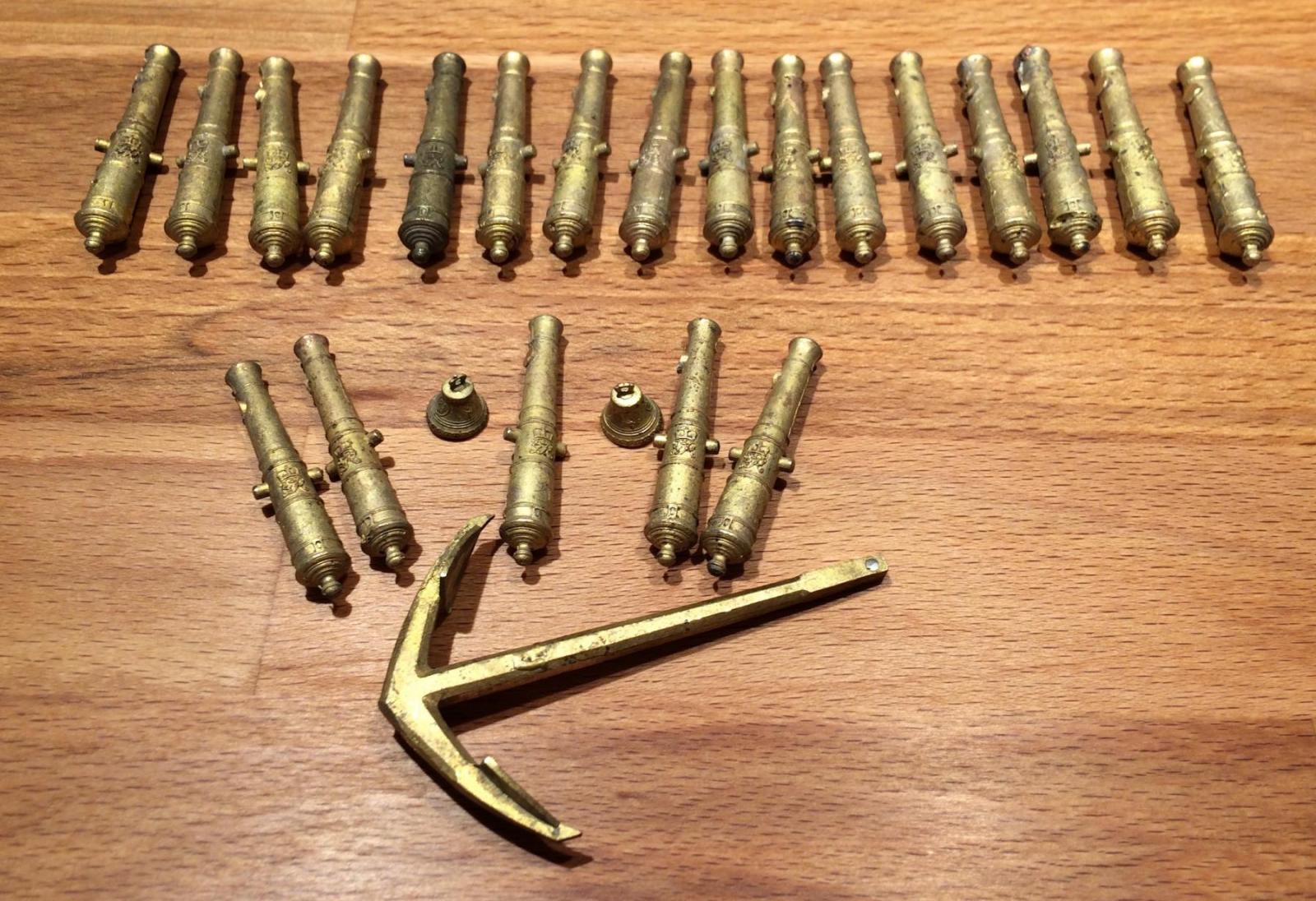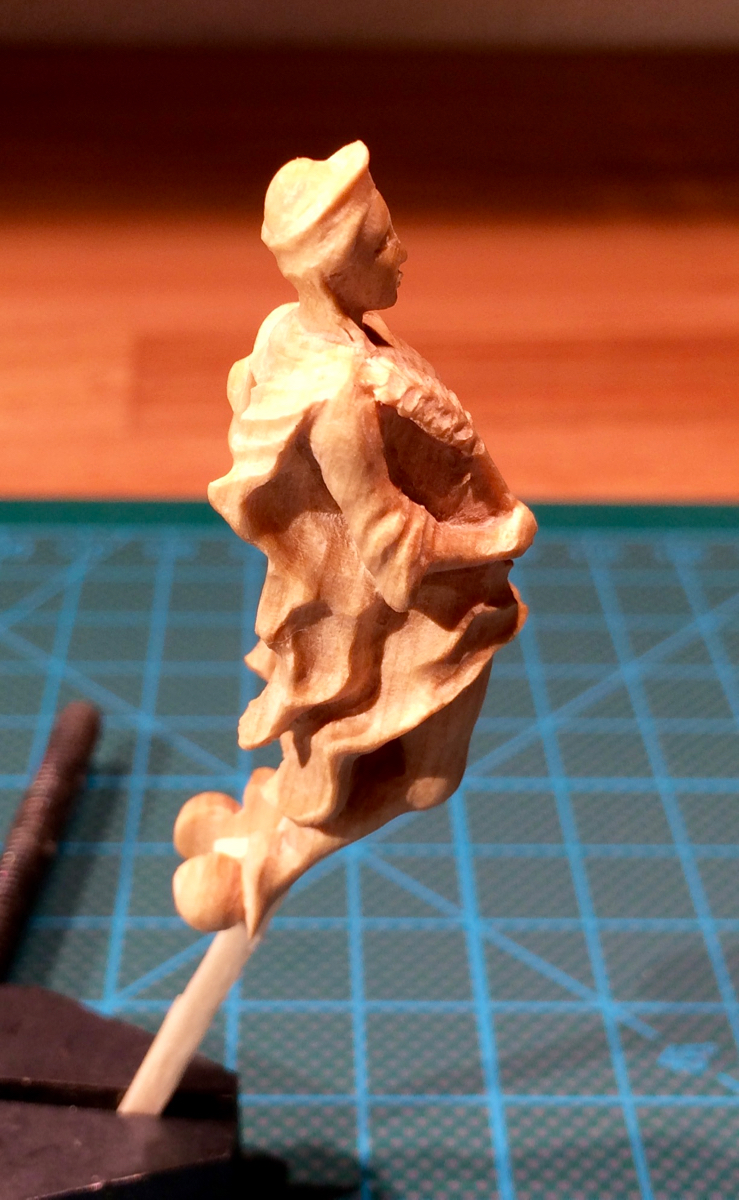-
Posts
1,549 -
Joined
-
Last visited
Content Type
Profiles
Forums
Gallery
Events
Everything posted by Mike Y
-
Deck clamp installation is in progress. Some clamps are curved (bow and stern), edge bending will not really work with such thick planks, so cut them to shape. Tracing paper helps a lot, just make sure it is fixed in place and will not move: In a meanwhile, was trying to make treenails. I do not trust the glue joint between the deck clamps and the frames, it might be too weak for the humidity varations. So will reinforce it with a boxwood treenails, brass nails would be really hard to sand inside the hull. Drawing through drawplate is really difficult after 0.7mm diameter, and is also very time consuming. Tried another method - drilling with a hypodermic needle, sharpened as a crown. So far my experiments failed - after first few nails wood gets stuck inside the nail and you get burned holes. After careful reading, seems like the trick is to bend the edges of the needle to the inside, so there would be a gap between the inner surface of a needle and a treenail. Tried the same idea with a large needle (designed to inflate balls) - but it is not polished inside, so I get burned wood again. Also, dremel drilling stand vibrates too much, so mill is the only option for that method. Test results, fail: Ordered a bigger hypodermic needles, will try again.
- 968 replies
-
- hahn
- oliver cromwell
-
(and 1 more)
Tagged with:
-
Metric vs English
Mike Y replied to jdiven's topic in Building, Framing, Planking and plating a ships hull and deck
There is also a good model scale converter for the iphone, that can also convert between different units at the same time: https://itunes.apple.com/us/app/model-scaler/id528641484?mt=8 -
HMS Naiad 1797 by albert - FINISHED - 1/48
Mike Y replied to albert's topic in - Build logs for subjects built 1751 - 1800
You are truly a master of wood tone selection! And it is an eye candy to see how precise and sharp your woodwork is. -
Thanks for the comments and likes! The idea with soft inner side of the clamps paid off, it flexes in difficult tight corners, no damage to the wood or to the finish: Just need to make more of them, waiting for the shipment of nylon screws. In a meanwhile, used my mill for the mass production of the scarph joints. Took 40min for two batches, including mill setup and a cleanup! Rough cut angle planks are fixed in the mill: First some passes to make them all level. Then cutting the ends to the depth of the joint (2mm in my case): Dividing the remaining joint in 2 equal parts, using mill table to measure the distance (do not forget to offset the cutter diameter). Cutting with the same 2mm depth: The resulting joint is perfect, but a bit too tight, needs force to be assembled, no space for glue. Sliiightly trimming ends of the planks on a disk sander, carefully with the angles: And that's it! Without a mill, it would take me half a day to make all these joints with chisel and file, and they would not be so straight.. Result of the day: clamps are steamed and fixed into place, left overnight to dry
- 968 replies
-
- hahn
- oliver cromwell
-
(and 1 more)
Tagged with:
-
The table on the first photo looks very good, like a fullsize slab table
- 728 replies
-
- le fleuron
- 64 gun
-
(and 1 more)
Tagged with:
-
Ben, maybe dissolving some glue joints and inserting extra spacers will solve the problem? The hull is so great!
- 889 replies
-
Marked all deck clamps locations and now playing with a small simple clamps that will help to glue deck clamps in place (no pun intended). The inner surface of the clamp is the extra soft basswood from the longboat kit, it is very good for clamping because it will never scratch the surface. But it can't hold anything in place, so the back side of the clamps is made of pear. Seems to work! The screws are nylon to avoid scratching the frames. (this is a temporary strip, not a real clamp. Just to mark a nice curve)
- 968 replies
-
- hahn
- oliver cromwell
-
(and 1 more)
Tagged with:
-
Metric vs English
Mike Y replied to jdiven's topic in Building, Framing, Planking and plating a ships hull and deck
Oh please not this again... -
Ben, it is still an incredible model! Maybe replace the cracked frames with a slightly thicker ones?
- 889 replies
-
Robin, you are right, it is a magazine. I am not very familiar with the internal rooms yet... Siggi, you helped a lot, thank you! Will build an english version, with a smooth line of the lower deck clamp
- 968 replies
-
- hahn
- oliver cromwell
-
(and 1 more)
Tagged with:
-
Carl, I agree, but I am a bit confused with the meaning of these dotted lines on the NNM blueprint. What are they? If I remember correctly, the powder room has a tiled floor for various reasons, there should be a space for this floor. So the shape of the powder room outlined with dotted lines make more sense.
- 968 replies
-
- hahn
- oliver cromwell
-
(and 1 more)
Tagged with:
-
It is a very charming photo, the man and his model. Agree, it would be perfect on a book cover!
- 3,618 replies
-
- young america
- clipper
-
(and 1 more)
Tagged with:
-
Started marking the deck clamp positions, seems pretty straightforward: But I am really confused about the location of the lower deck clamp. The method is very simple - take the deck beams locations, make an offset because they are inserted into 1'' recesses in the clamps, mark the clamp position accordingly. However, the lower deck beams line has some weird step, according to Hahn plans: Original NNM plans have two sets of beams pictured, one of them is in dotted lines: Close-up: I am really confused about the meaning of it. With an open and unplanked hull, I do not want to make a stepped lower deck clamp, it will not look nice. Would really appreciate an advice!
- 968 replies
-
- hahn
- oliver cromwell
-
(and 1 more)
Tagged with:
-
Looks really great! Just a little bit of a feedback - don't you think that frames are a little bit too thin, cut very close to the lines? It leaves a very small margin for fairing, and especially around midship it is easy to get slight mis-alignment on top part of the frame. Lots of experienced builders advised to cut a frame with 1mm margin from the lines, which would be needed when fairing. Also, I was surprised how much material is gone when fairing is finished, and you just sand it or with fine paper to make a smooth surface without scratches. Just my 2 cents, maybe you already thought it through
-
Thanks a lot for likes and good words, it is really encouraging! Now playing with different tools to properly transfer height/depth from plans to the inside of the hull. Height gauge only works outside, but thanks to MSW, there are lots of different jigs posted in other build logs
- 968 replies
-
- hahn
- oliver cromwell
-
(and 1 more)
Tagged with:
-
Thank you!The oiled side would not be planked at all, the other side would be fully planked, so it was not oiled
- 968 replies
-
- hahn
- oliver cromwell
-
(and 1 more)
Tagged with:
-
Final result. As you can see, I was not really careful with the wood selection in the beginning, so there is a spot of lighter pear around the midship. I began to sort the wood into lighter and darker color later on, and now it is visible. Forever. Well.. Let's call it an artistic touch Overall, I am pleased with the colour, but surprised it became reddish. It will probably get darker and fade away over time. There is also a big contrast between the along-the-grain wood covered with WOP (all the parts of the keel) and cross-grain wood with oil applied. It is literally the same wood, where I selected a pretty dark pieces for the keel! I swear! Now it looks like two different woods. Let's call this a feature too I am done with the fairing, and done with the hull structure. HOORRAY! Now I can finally relax, watch the oil dry and start making the deck clamps. Big relief! The hull is not screwed up while fairing, the viking funeral is cancelled
- 968 replies
-
- hahn
- oliver cromwell
-
(and 1 more)
Tagged with:
-
Yay, the fairing is finally finished! It was a nasty process with lots of curves, and final finish done by scraping with xacto blades. But in the end no frame got hurt, no iron bolts got exposed (though some come really close to the edge). Applied one coat of a non-diluted, 100% pure tung oil (tried diluted oil - result was blotchy, meh). I was applying a very moderate amount of oil and wiping it with a cloth quickly to prevent uneven result. Covering only the outside surface, no oil at all was applied inside the hull (because deck clamps would be glued to it). The process was very relaxing, finished in the middle of the night.. And you can imagine my surprise when I checked the inside of the hull and saw OIL there! Seems like it really penetrated through the entire frame, except the thicker floor timbers. You can see the oil avoiding the lamination seems, where glue blocks the oil from penetrating. I really thought it goes just 1-2mm inside the wood, but no, it is more like 5mm, and maybe even 10mm if you take the grain direction into account. At the same time, it is fairly simple to scrape it away with xacto blade. Miracle. Capillary suction sucked a pretty thick oil, which was applied in a very moderate amounts.. Who could have guessed.
- 968 replies
-
- hahn
- oliver cromwell
-
(and 1 more)
Tagged with:
-
If working with wood and moving the table manually, I have a hard time imagining a need for a high speed. 1mm cutter on pear on 5k rpm gives a super clean cut, why should I spin it faster? I am a beginner when it comes to milling, would appreciate an explanation from some more experienced members!
-
Thank you, Siggi! They are really valuable for me.
- 968 replies
-
- hahn
- oliver cromwell
-
(and 1 more)
Tagged with:
-
Latest updates: Got a shipment of cast cannons (from http://shipmodels.com.ua/) andanchor and also a cnc milled figurehead (from igorcap) Very little time for modelling, but briefly visited Paris to admire the great collection of fully framed models in its maritime museum. Still fairing the inside of the hull. The "planked" side fairing is finished, but the "prime" fully opened side will take more time. It is a nasty process, I will really follow a traditional build sequence next time - fairing bow and stern first, before midship is assembled. Out of all my tools, just two are usable for it - curved scraper and a similarly shaped sanding block. Also some xacto blades for a fine scraping later during the process: Found a super simple way to keep the dust away - two sheets of paper - and it is collecting under the hull, not getting onto the floor. Also looks spooky These parts are really tricky due to very convex curves: My frame alignment was not perfect, some ended up too thin, but I will cheat a beat and leave them slightly unfair on the internal side - it would be hard to see anyway. Lesson for the future - build in the upright position, where it is much easier to control the alignment of the thin top timbers. If building in Hahn way, upside down - leave a lot of margin around top timbers, where they are thin and sensible to misalignment, when you cut the frames.
- 968 replies
-
- hahn
- oliver cromwell
-
(and 1 more)
Tagged with:
-
Love the photo that is 2nd from the bottom. Very elegant lines of the frames, and a beautiful finish! Sweeet!
About us
Modelshipworld - Advancing Ship Modeling through Research
SSL Secured
Your security is important for us so this Website is SSL-Secured
NRG Mailing Address
Nautical Research Guild
237 South Lincoln Street
Westmont IL, 60559-1917
Model Ship World ® and the MSW logo are Registered Trademarks, and belong to the Nautical Research Guild (United States Patent and Trademark Office: No. 6,929,264 & No. 6,929,274, registered Dec. 20, 2022)
Helpful Links
About the NRG
If you enjoy building ship models that are historically accurate as well as beautiful, then The Nautical Research Guild (NRG) is just right for you.
The Guild is a non-profit educational organization whose mission is to “Advance Ship Modeling Through Research”. We provide support to our members in their efforts to raise the quality of their model ships.
The Nautical Research Guild has published our world-renowned quarterly magazine, The Nautical Research Journal, since 1955. The pages of the Journal are full of articles by accomplished ship modelers who show you how they create those exquisite details on their models, and by maritime historians who show you the correct details to build. The Journal is available in both print and digital editions. Go to the NRG web site (www.thenrg.org) to download a complimentary digital copy of the Journal. The NRG also publishes plan sets, books and compilations of back issues of the Journal and the former Ships in Scale and Model Ship Builder magazines.


